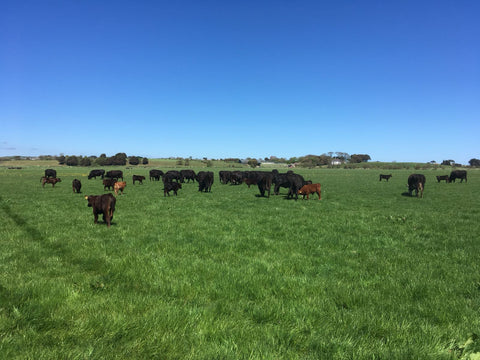Why Does Vacuum Sealed Meat Smell Strange Once Opened?
The Role of Vacuum Sealing
Vacuum sealing involves removing oxygen from the packaging environment, creating a barrier against bacterial growth. This process helps in preserving the meat's freshness and preventing spoilage. During storage, the natural juices within the meat can interact, causing slight discoloration and a tangy odour. Upon opening the package, this odour is released but typically dissipates if the meat has been properly stored and is within its use-by date.
The Science Behind the Smell
The tangy smell is often due to the accumulation of lactic acid and other natural compounds that develop in the absence of oxygen. These compounds are generally harmless and are a result of normal biological processes within the meat. Provided there has been no compromise in storage conditions, this smell does not indicate spoilage.
How to Get Rid of the Smell
Rinsing and Airing
To mitigate the odour, gently rinse the meat in clean, fresh water. It is crucial to do this gently in a bowl rather than under running water to prevent the spread of potential bacteria. After rinsing, pat the meat dry with paper towels and allow it to sit at room temperature for about 30 minutes. This process not only helps the meat to cook more evenly but also allows the odour to dissipate and the meat to regain its normal colour.
Identifying Spoiled Meat
Indicators of Spoilage
Despite the tangy odour being generally harmless, there are instances where the meat may be spoiled. Key indicators include:
- Check the Seal: Ensure the vacuum seal is intact. If the package is loose or shows signs of leaking juices, air may have entered, leading to spoilage.
- Colour Check: After rinsing, the meat should return to its natural colour within 30 minutes. If it remains grey or brown and emits a strong odour, it is likely spoiled.
- Texture Test: Spoiled meat often feels sticky or slimy. If the meat retains these characteristics after rinsing, it should be discarded.
Handling Meat That Smells Bad but is Within Its Use-By Date
Trusting Your Senses
If the meat emits a strong, unpleasant odour despite being within its use-by date, rely on your senses. Check for sliminess, tackiness, and discoloration. If these signs are present, do not consume the meat. Return it to the retailer for a refund.
Possible Reasons for Spoilage
Undetectable Air Holes
Even a tiny air hole in the vacuum seal can introduce oxygen, allowing spoilage bacteria to multiply. Such holes might occur due to an insufficient heat seal, a crinkle in the bag, or a puncture during handling.
Incorrect Storage Conditions
Meat should be stored at temperatures below 5°C (40°F). Any deviation from this can promote bacterial growth. This includes the time meat spends in your shopping cart, the journey home, and even within your refrigerator, where temperature can vary between different sections.
Proximity to Use-By Date Before Packing
The freshness of the meat prior to vacuum packing plays a crucial role. If the meat was near its use-by date before being vacuum-sealed, its shelf life could be compromised. Some butchers age meat to enhance flavour and tenderness, but if not properly trimmed, this can include parts that have begun to spoil.
Random Factors
Occasionally, a piece of meat may spoil due to factors beyond human control, such as an internal defect or injury in the animal that was undetectable during processing.
If in Doubt, Throw It Out
It is always safer to err on the side of caution. If after following these steps, there is still doubt about the meat's safety, it is best to dispose of it. Food poisoning can be severe and sometimes fatal, making it not worth the risk.
Extra Tip: Cooking Smell
Cooking meat should produce a mouth-watering aroma. If the meat smells bad during cooking, it is another indicator that it is spoiled and should not be consumed.
Conclusion
Understanding the nuances of vacuum-sealed meat and the reasons behind its odour upon opening can help in making informed decisions about its safety. By following the steps outlined and trusting your senses, you can ensure that the meat you consume is both safe and enjoyable.





Comments (0)
There are no comments for this article. Be the first one to leave a message!